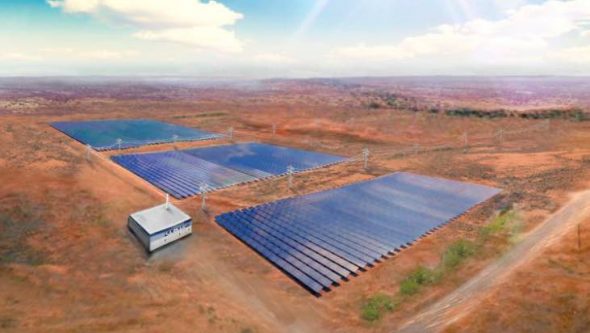The highly ambitious solar and battery storage developer Lyon Group has unveiled yet another big project, this time a AU$660 million solar plus storage project in Victoria, adding to its growing portfolio in South Australia and Queensland.
The latest plan for a 250 MW large-scale solar plant, paired with 80 MW/160 MWh of battery storage at Nowingi in north-western Victoria, takes its total pipeline to more than 1,700 MW of solar and 1,000 MW of storage.
But in a new twist Lyon has announced that it is planning a tender for contracts to cover the 640MWh of storage capacity at its most advanced projects in Victoria, South Australia (Riverland) and Queensland (Cape York).
Lyon Group’s David Green said the tender would be open for electricity retailers and generators, large electricity users, and other sector participants for a range of services including price arbitrage, load shifting, ramp control, frequency control and network control that he values at a total of $220 million.
“Lyon will enter into commercial contracts for real services provided by physical assets,” Green said in a statement. “This is not a theoretical exercise.”
He describes the tender exercise as a “world first” and was in response to many enquiries from retailers and others about the sort of services and pricing that would be offered from the projects. Lyon decided that they would go out and seek what was wanted and what people would pay for it.
Several companies have announced plans for large-scale solar and storage facilities in Australia, including Zen Energy, Reach Energy and Carnegie Clean Energy, but none come close to the scale that Lyon has announced.
However, none of the projects have commenced production to date, although Green insists that all three projects will begin construction this year – Nowingi and Riverland as early as September. It is backed by Japanese trading giant Mitsubishi and US investor Magnetar Capital.
Lyon says all three projects, totalling nearly $2 billion, will be 100 per cent equity financed, and Green said that the results of the tender would help decide the final design and configuration of the projects. It is using battery systems integrator AES.
Lyon also joins a host of battery storage tenders, including those being run by South Australia and Victoria, both of which are designed to be built by this coming summer.
Victoria’s two 20 MW battery storage projects, totalling around 100 MWh, are also slated for western Victoria, where it faces grid issues as it seeks more than 5,000 MW of new wind and solar to meet its 40 per cent renewable energy target by 2025. That tender closed last week.
The South Australia government currently has a tender out for 100 MW and up to 200 MWh of battery storage, although Lyon says it has not entered those tenders.
The move also comes as the Finkel Review recommends storage be front and centre of Australia’s energy security concerns, although his recommendation that all new wind and solar farms be paired with storage and/or firming capacity has drawn criticism for being overkill.
It is not clear that the Coalition government will adopt Finkel’s recommendations, or to what state that storage will be mandated, although Green has said, unsurprisingly, that he is a supporter.
Green is confident that Nowingi will begin construction “in the coming months” and will employ 250 at that stage. The other solar storage projects within the scope of the tender are Cape York (Queensland) and Riverland (South Australia).
Other developments are for the Kingfisher project near Roxby Downs in South Australia, which Green says is going through state planning approvals, and others will also emerge, including deals with large energy users for both solar and storage.
“These projects are working through development consultation and approvals. The land has been secured, technology and other commercial arrangements are in place, and the required network capacity analysis and consultations are well advanced,” Green said.
“Projects like these are the heart of Australia’s energy transition, allowing for substantially higher levels of variable, low emissions generation, while strengthening the resilience of the system. It is real and it is happening.”
Green says the full services of battery storage are not yet fully understood, noting that large-scale battery storage can provide both a cost-effective alternative to network infrastructure upgrades, and to new gas generation, and can ensure the true value of large-scale renewables is realised, if all its “value stack” can be exploited.
Green said that Lyon is developing a number of new and innovative battery storage products that it will release to the market in the near future.
This article was reproduced with permission from RenewEconomy.
This content is protected by copyright and may not be reused. If you want to cooperate with us and would like to reuse some of our content, please contact: editors@pv-magazine.com.



By submitting this form you agree to pv magazine using your data for the purposes of publishing your comment.
Your personal data will only be disclosed or otherwise transmitted to third parties for the purposes of spam filtering or if this is necessary for technical maintenance of the website. Any other transfer to third parties will not take place unless this is justified on the basis of applicable data protection regulations or if pv magazine is legally obliged to do so.
You may revoke this consent at any time with effect for the future, in which case your personal data will be deleted immediately. Otherwise, your data will be deleted if pv magazine has processed your request or the purpose of data storage is fulfilled.
Further information on data privacy can be found in our Data Protection Policy.